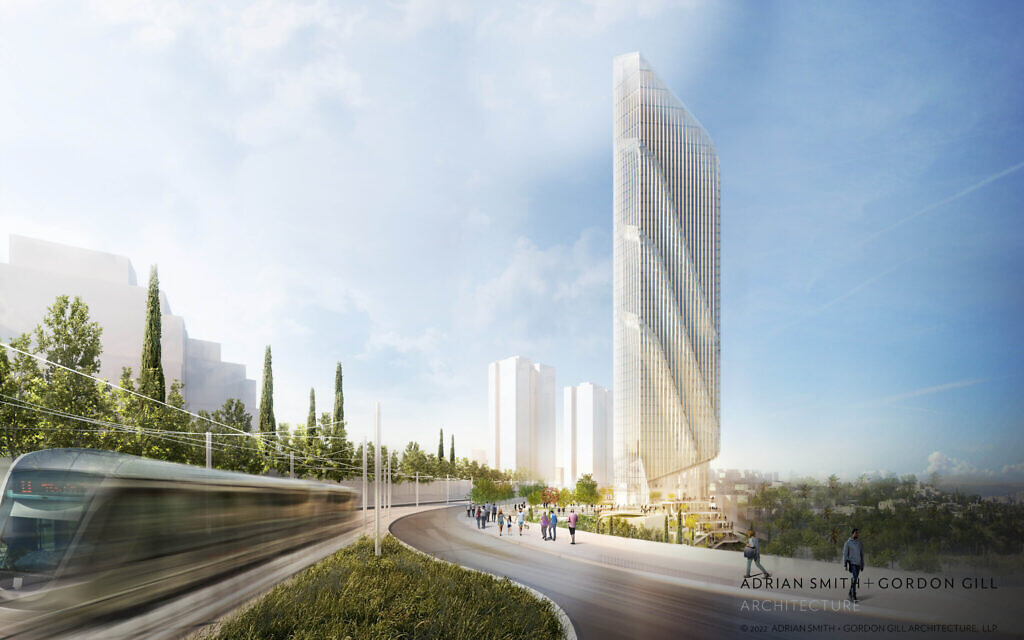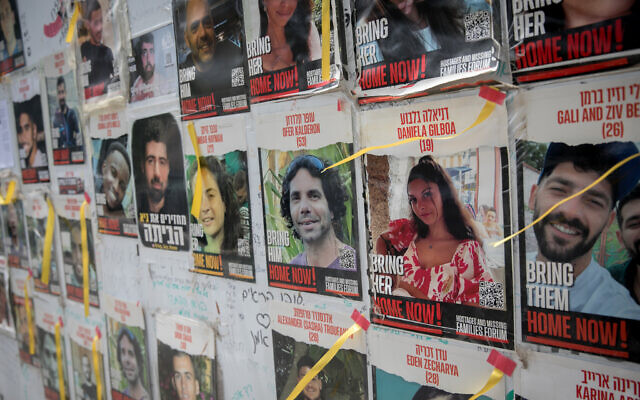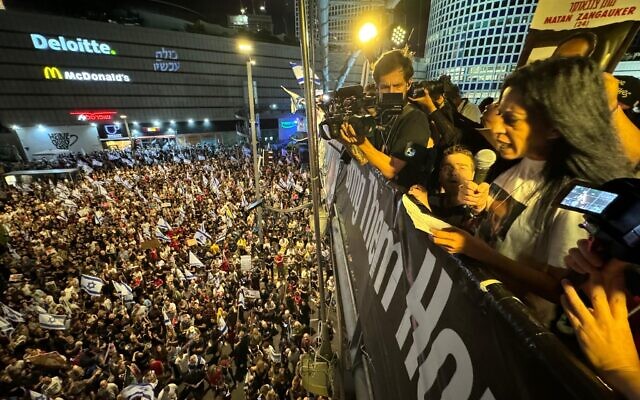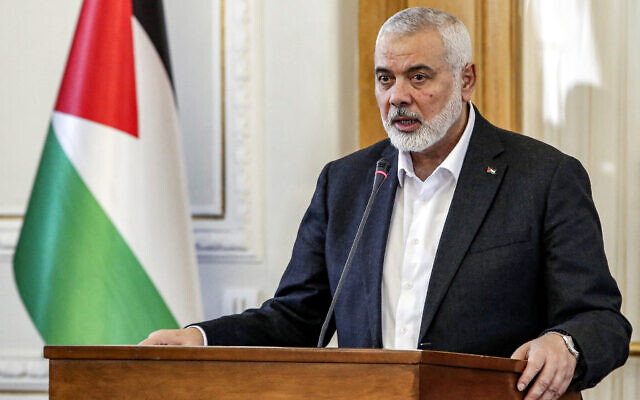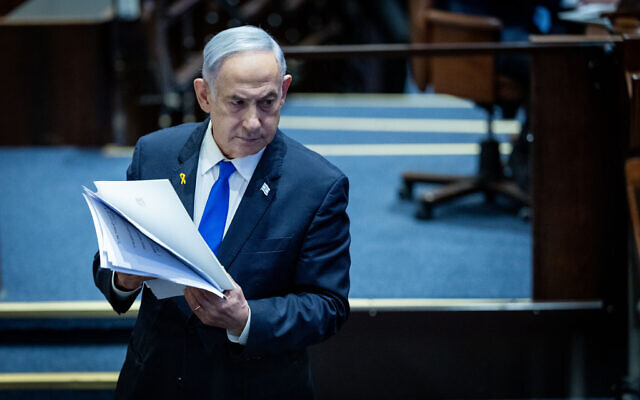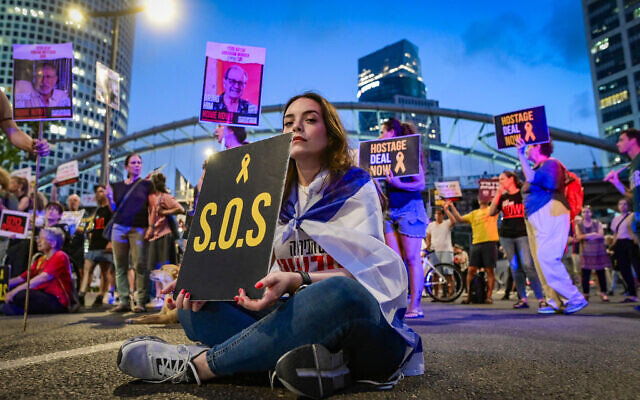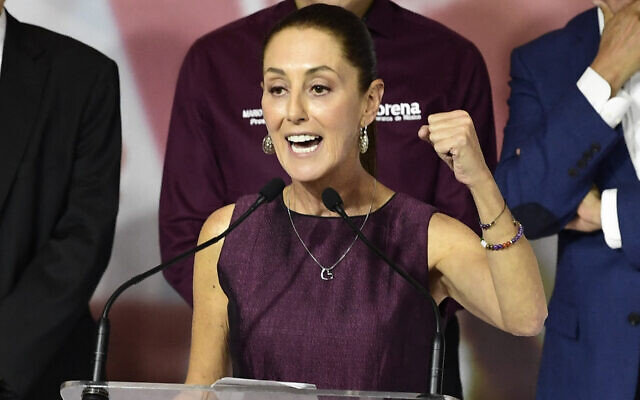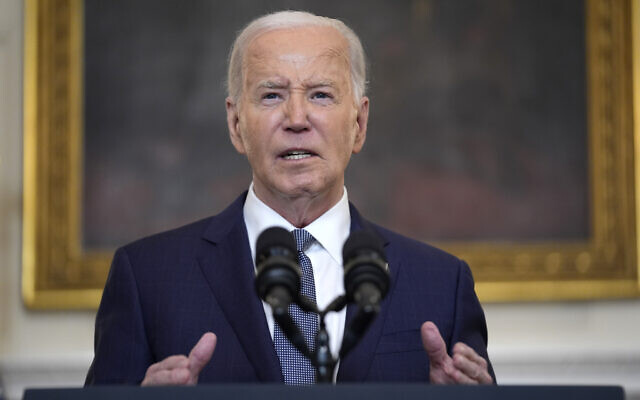Jerusalem eyes its own Burj Khalifa as Israeli cities seek new heights
Architects are planning supertall buildings to dominate the skylines of tomorrow
A new building that may come to define Jerusalem as much as the city’s religious and architectural monuments is currently under discussion by city planners. Known as the city’s version of the Burj Khalifa, if approved it will stand 40 stories high in the Kiryat Hayovel neighborhood, next to Mount Herzl’s light rail station.
The international architects behind the design, Adrian Smith and Gordon Gill, were responsible for the original Dubai super-tower. But those leading the practical aspects of the project are quick to stress that this will not be a copy of the original, but rather a uniquely designed structure to fit within the Jerusalem landscape.
Four years into the development process, the ongoing challenge has been to deliver a design that is both traditional and modern and meets all the different community needs. The proposed building will be faced with Jerusalem stone and include balconies as an integral part of the sweeping design. It will offer both private and public space, including viewing spaces. And it will have 240 housing units, plus an additional 48 small apartments, a hotel, and a cultural center.
The building still lacks some licenses and will take five years to build. But all involved recognize that this skyscraper must fit within the unique architectural landscape of the city.
The pressure on land and housing prices in Jerusalem is inevitably focusing attention on elevating the city landscape. A 30-story tower is already under construction on Pierre Koenig Street in Talpiot, set for completion in 2026. It will offer 144 apartments including 30 student housing units. A group of 20 towers is planned for the Western entrance to the city and care is being taken to ensure that plans include cultural spaces, art galleries, and museums. Other towers are under consideration for other parts of the city.
But as an increasing number of relatively tall buildings are approved in Jerusalem, there are concerns that the character of the city is shifting, views are altering, and the connection between the city and its surrounding hills and forests is being obscured.

The situation is not straightforward. Jerusalem needs more homes, and it remains of great interest to foreign investors. With limited land, the city must increase its density. The TAMA 38 program, which allows for additional floors to be added to existing buildings, is in extensive use by developers across Jerusalem, promoted by the Jerusalem Municipality as a way to deliver urban renewal and new apartments within the city’s existing footprint.
But the skyline and the feel of neighborhoods are changing. Much of the time, these tall buildings also fail to deliver the affordable housing particularly needed by a growing ultra-Orthodox community. For example, the Savyon View Tower currently under construction will have 27 stories, with 194 apartments, but the price for a one-bedroom unit starts at NIS 2.5 million ($785,742).

Tel Aviv already has the title of the seventh-tallest city in the Middle East, based on the number of buildings over 150 meters. Already-high prices are increasing the heights and density of high-rise building there too, and a new masterplan for the city envisages an increasing number of buildings 20 to 80 stories high.
The city’s tallest skyscraper currently under construction is the Azrieli Spiral Tower. It is expected to measure over 300 meters, with 91 stories. The design has been led by Kohn Pederson Fox Associates, the American architecture firm behind some of the world’s tallest existing structures, including the 555-meter Lotte World Tower in Seoul, South Korea, and the 435-meter One Vanderbilt Tower in Manhattan.
The Spiral Tower will top the nearby Azrieli Sarona Tower – currently the tallest building in the country – by some 100 meters and cost in the region of NIS 2.5 billion ($790 million). Its base will add to the existing Azrieli shopping mall, but the building will also include office floors, 171 apartments, a hotel with around 250 rooms, and an open-air chef restaurant and bar on its top floors.
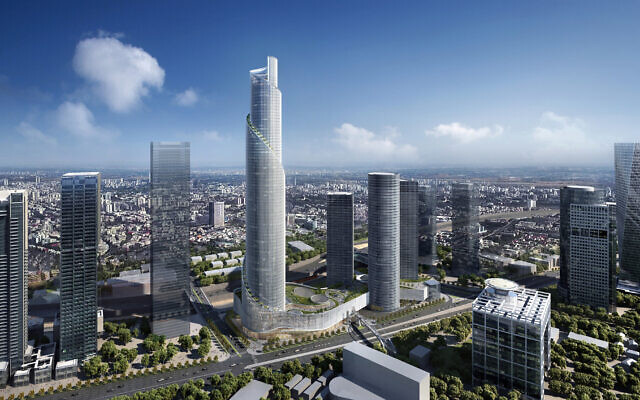
Tel Aviv’s domination of the skies is likely to be short-lived. Ramat Gan Mayor Carmel Shama Hacohen has approved a masterplan for the re-development of the Diamond Exchange district that includes a skyscraper of more than 400 meters high.
The area plan, designed by Israeli architect David Glor, will include a range of affordable housing options. The centerpiece of the plan is intended to be Israel’s first building of more than 100 floors. The Bein Arim Tower is already under construction near the bourse on Menachem Begin Road and is expected to be completed in 2023. It will be joined by a rebuilt diamond exchange of 120 floors to be constructed within the next 10 years.
Hacohen, speaking to the Globes business daily, said he was looking to leverage this building to “make Ramat Gan into Israel’s Abu Dhabi in economic terms.”
In Haifa, the view is different. Mayor Einat Kalisch-Rotem has set out a vision of doubling the city’s population to 600,000 residents. But she is determined to preserve the relationship between the city, the Carmel mountain ridge and the port, and believes that allowing the development of high-rise buildings will interrupt those views.
The city is therefore proposing to restrict buildings to a maximum of 30 floors, or under 100 meters, and has set maximum heights for different parts of the city.

Buildings of up to 22 floors will be allowed in western neighborhoods — Neot Peres, Neve David, Sha’ar Ha’aliya, and Kiryat Eliezer. Towers of 22 floors can also be built on Hahistadrut Boulevard, the main traffic artery, and in the space left by the removal of the petrochemical industry from Haifa Bay. Higher construction will be allowed in the lower eastern part of the city in the Neve Shaanan neighborhood, and the Savyonei Hacarmel area below the University of Haifa.
But strict limits are being imposed in other parts of the city. In Hadar Hacarmel, the intention is to allow height increases on existing buildings only up to five to six floors, while in the central Hacarmel area above the German Colony and the Bahai Garden construction will be limited to 10 stories.
Kalisch-Rotem has said there will be no bargaining with developers and that the priority will be to bring life back to the city center and older neighborhoods while retaining the character of the city. The only higher towers to have been approved are two 54-floor buildings connecting the lowest part of the Nesher quarry site with the cable car and the Technion, seen as falling outside of the city of Haifa.
With huge demand for housing, and limited land available, going up is one way to square the seemingly impossible circle.
Are you relying on The Times of Israel for accurate and timely coverage right now? If so, please join The Times of Israel Community. For as little as $6/month, you will:
- Support our independent journalists who are working around the clock;
- Read ToI with a clear, ads-free experience on our site, apps and emails; and
- Gain access to exclusive content shared only with the ToI Community, including exclusive webinars with our reporters and weekly letters from founding editor David Horovitz.

We’re really pleased that you’ve read X Times of Israel articles in the past month.
That’s why we started the Times of Israel eleven years ago - to provide discerning readers like you with must-read coverage of Israel and the Jewish world.
So now we have a request. Unlike other news outlets, we haven’t put up a paywall. But as the journalism we do is costly, we invite readers for whom The Times of Israel has become important to help support our work by joining The Times of Israel Community.
For as little as $6 a month you can help support our quality journalism while enjoying The Times of Israel AD-FREE, as well as accessing exclusive content available only to Times of Israel Community members.
Thank you,
David Horovitz, Founding Editor of The Times of Israel


